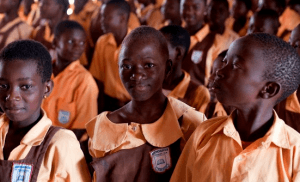Donors fail to keep pledges to Ghana, as global education funding gap widens to $26b
 Donors continue to fail in keeping their pledges to provide funding for Ghana’s education sector, as the global funding gap for education widens to $26 billion, a new UNESCO report says.
Donors continue to fail in keeping their pledges to provide funding for Ghana’s education sector, as the global funding gap for education widens to $26 billion, a new UNESCO report says.
According to the report released March 14, 2013, the funding gap in Ghana’s education sector is not due to the government not living up to its responsibility but due to the fact that donor governments have failed to keep their promises of keeping up and increasing aid to Ghana.
“In Ghana, 5.6% of GNP was spent on education in 2010 – an increase of over a percentage point from the 4.2% spent in 1999,” the report noted, adding that “Almost 10% of Ghana’s education budget comes from aid. It is vital that these funds do not stagnate, and that they increase over time to help fill the global funding gap for education.”
The report indicated that filling this funding gap doesn’t have to mean new money from aid donors necessarily.
“Donors could start by prioritizing primary education in their budgets, instead of spending their money on higher education or on scholarships for developing country students to study in donor countries,” it said.
The report also revealed that currently, around 25 % of direct aid to education is spent on students from developing countries to study in donor countries.
“For the amount it costs for one Ghanaian student to study on scholarship in Japan, for example, 72 young people could have accessed secondary education in Ghana,” it said.
UNESCO’s Education for All Global Monitoring Report after new calculations has revealed that the $16 billion annual external funding gap to achieve basic education in poor countries by the 2015 target date has widened to $26 billion over the last three years.
“This gap chiefly affects the achievement of universal primary education, the second Millennium Development Goal,” it says.
The data which is published in a policy paper titled, “Making Education for All Affordable by 2015 and beyond”, says that stagnating aid to basic education in low-income countries, which runs at an average of $3 billion annually, is the main reason for the $10 billion increase in the funding gap.
Acknowledging that domestic spending on education has increased by $3 billion annually in low-income countries in recent years, the report holds that, it still only amounts to half the amount required to achieve basic education for all. The study also shows that filling the funding gap is possible if governments and donors prioritize education and target those most in need.
Commenting, Irina Bokova, Director-General of UNESCO, said, “While $26 billion sounds like a large gap to fill, the analysis shows that it is possible to raise the resources needed to enroll every child in school by 2015.
“In 2000, donor governments promised that no country would be prevented from achieving Education for All by a lack of resources. Alongside national governments, donors must now step up their efforts, to make sure finance is not the obstacle that stands in the way of helping all children go to school,” she said.
The report, however, pointed out that the Ghana government also has a role to play and could also look to prioritise primary education better than it is.
“At the moment, Ghana has increased the share of the education budget earmarked for tertiary education which now makes up 23% of public expenditure on education; the shares for both primary and secondary education, on the other hand, have decreased since 1999,” it said.
By Emmanuel K. Dogbevi
